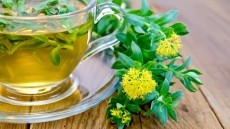Hoodia import, export rules posted by FWS
importers, exporters and re-exporters of their obligations for the
Hoodia species, as the US market for slimming products continues to
grow.
Hoodia, a cactus-like plant, has been eaten by the San Bushmen of the Kalahari Desert to reduce hunger and increase energy for around 100,000 years.
The export of genuine South African Hoodia gordonii is strictly controlled, and it comes accompanied with paperwork certifying its provenance.
The FWS has now moved to clarify and remind traders in the herb of the strict regulations put in place. The herb is listed in Appendix II of the Convention on International Trade in Endangered Species of Wild Fauna and Flora (CITES), and as such must be "accompanied by a CITES Appendix II permit of certificate issued by the CITES Management Authority" either in the exporting country or from the US CITES management authority.
"This is true regardless of whether the exporting or re-exporting country is in the native range of Hoodia or not. It is also true regardless of whether the Hoodia is from wild origin or artificially propagated (cultivated)," reads the FWS letter.
Publicity surrounding the reputed appetite-suppressant properties of Hoodia gordonii, a South African cactus-like plant, has led to a surge in demand in the US. The domestic market for slimming products is reported to be over $40 bn.
In the 1990s, South African scientists isolated the active ingredient in hoodia gordonii, called P57. In 1997 this was licensed exclusively to British pharmaceutical company Phytopharm by the South African Council for Scientific and Industrial Research.
Unilever obtained the global rights to P57 from Phytopharm in December 2004 with the first products expected to appear on the market before 2007.













